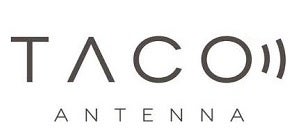
As the use of drones grows through all forms of military operation – as well as in civilian and commercial settings – there is increased demand for counter-drone technology. But a failure of regulators to keep up with such innovations is causing problems
The use of drones – or unmanned aerial vehicles (UAVs) to use the technical terminology – has gathered pace in recent years, with most countries having access to some form of UAV platform. As new technologies, such as AI and drone swarms mature, UAVs have the potential to revolutionize warfare.
They also present an opportunity for terrorist organisations or protest groups keen to launch attacks to disrupt commercial, government or military facilities. To answer this emerging threat, investment is required in Counter Unmanned Aerial Systems (C-UAS).
The commercialization of drones is a key driver for the C-UAS market, with technological advances lowering the costs of acquiring drones and widening the pool of those who can access one. This has led to wider commercial and government proliferation, which itself necessitates the development and procurement of C-UAS systems in a variety of defence, commercial, and law enforcement roles.
Given the focus on the development and advancement of drone technology, it is likely that in future, the cultivation and procurement of robust C-UAS systems, capable of countering a range of UAV threats will be essential.
UAVs have witnessed tremendous advances in terms of the number of deployed systems, as well as individual system capabilities, including developments such as swarm technology, which have all led to a proliferation of these kinds of systems. These enhanced capabilities and ease of operation have helped to drive demand, which is only going to grow over the next decade.
The proliferation of UAVs has been so extensive that insurgent groups such as Islamic State (IS) have reportedly been using them. IS has used these systems to launch attacks on US, Russian and Syrian forces in Syria. There have also been several instances where commercial UAVs have been used to create chaos and carry out terror missions.
Terrorist tactics have included the arming of cheap UAVs to deploy grenades or mortar rounds, which in turn have raised serious concerns on issues regarding the anticipation, prediction and detection of rogue UAVs. These factors have in turn led to a boom in demand and testing of a range of new C-UAS systems.
Regulation remains behind the curve
At present, the use of C-UAS technology is restricted to military uses, with commercial use largely prohibited. But there is significant confusion and ambiguity as to the exact legal status of the use of C-UASs. This is because the technology is often subject to numerous overlapping laws, many of which were originally drafted to address other technologies, long before counter-drone technology existed.
Additionally, in the commercial market, different countries have varying restrictions on the use of drones. This may affect demand for C-UASs intended for law enforcement use, as the saturation of platforms in the civilian population will vary from place to place.
There are currently limited international standards governing the proper design and use of C-UASs. This has contributed to the wide variations in practicality between systems that are in principle similar. Given the rapid growth of the industry, there has been limited opportunity for international standards to emerge naturally, with many of the technologies on the market being extremely new.
With directed energy weapons (DEWs) for example, the journey from concept and theory to selling products took less than 10 years. As the industry continues to grow, and C-UASs are more widely available, it is likely that international standards will be imposed upon the industry. Companies active within this segment of the aerospace and defence industry will need to rapidly align their products with these standards as they emerge.
What does the law say today?
Systems that detect, monitor, or track drones often rely on RF, radar, EO, IR, or acoustic capabilities, or a combination of several such technologies. These capabilities detect the physical presence of a UAS, or signals sent to or from it. Within the US, it is unclear whether such detection or tracking systems might activate federal criminal surveillance laws, such as the Pen/Trap Statute and the Wiretap Act.
The key factor is whether the system captures, records, decodes, or intercepts, in whole or in part, electronic communications transmitted to and from a UAS and/or controller and the type of communications involved.
Other detection systems work by emitting electromagnetic waves or pulses of sound or light, that are reflected off an object and back to the detection system — such as radar, EO/IR, and acoustic systems. These are less likely to pose concerns under federal criminal surveillance statutes. Such technology does not capture, record, decode, or intercept any electronic communications.
By contrast, systems using RF capabilities to detect and track drones by monitoring the communications passed between a drone and its ground control station may implicate both the Pen/Trap Statute and Wiretap Act.
The Pen/Trap Statute criminalizes the use or installation of a device or process that records, decodes or captures non-content dialling, routing, addressing or signalling (DRAS) information.
The Wiretap Act prohibits, among other things, intentionally intercepting the content of any electronic communication, unless it is conducted pursuant to a court order or a statutory exception applies.
The use of kinetic solutions may implicate federal criminal prohibitions against intercepting and interfering with communications, damaging a “protected computer” and damaging “an aircraft”. The term aircraft here is closely defined and, importantly, consistent with uses elsewhere in US law.
And so, to a solution
As more players enter the market, it is likely that the next few years will see drones get cheaper to manufacture and therefore more widely deployed, by mainstream militaries and insurgent groups and terrorists, as well as a range of commercial and civilian uses. As the use of drones rises, so the need for C-UAS will grow. Taco Antenna is on hand to help.
TACO’s growing line of C-UAS antennas includes a patented dual frequency 2.4 & 5.8 GHz circularly polarized directional antenna and a newly released circularly polarized directional GPS antenna, covering the entire range of frequencies between L1 and L2 GPS bands in a single output antenna.
Chad Squizzato, Director of Sales for TACO Antenna said, “Our valued customers are using our C-UAS antenna products in a range of applications from RF threat detection and location finding to RF defeat countermeasures.” Squizzato continued, “Our advanced engineering capabilities allow us to meet any Counter-Drone design challenge.”
TACO Antenna brings over 85 years of design and manufacturing expertise to the C-UAS market specialising in communications antennas used by militaries, defence contractors and commercial civil aviation systems integrators worldwide.
Read more information on the full range of Taco Antenna’s products


